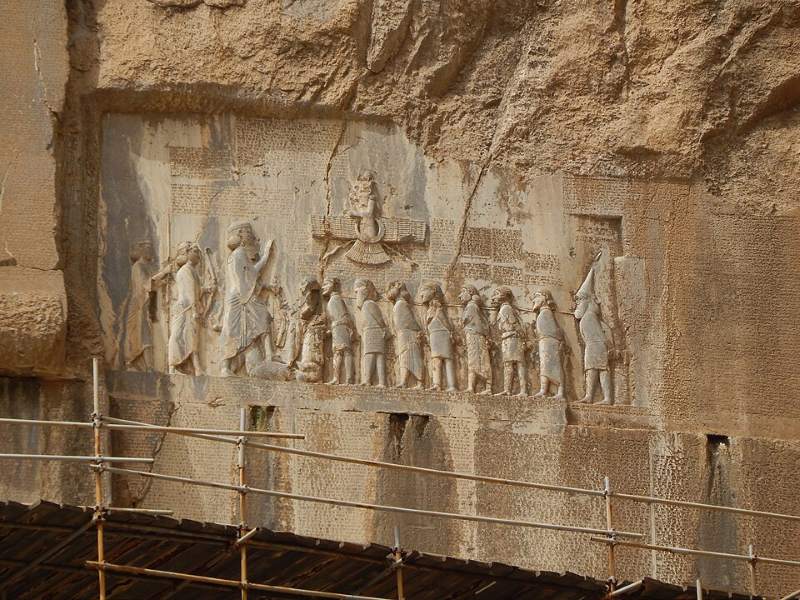

Experts at the Persepolis World Heritage Site have initiated a significant project for the restoration and protection of the largest known inscription by King Darius the Great.
The work, located on the southern side of the ancient site, aims to preserve the writing for future generations after years of damage caused by weather and poor handling.
The inscription, known as the “First Command of Darius the Great,” is carved into a rock slab over seven meters long and two and a half meters wide. It holds rare value for historians and language experts alike.
Written in Old Persian, Elamite, and Babylonian, the text provides insight into the culture, beliefs, and leadership of the Achaemenid Empire, which ruled much of the ancient world more than 2,500 years ago.
A well-known line from the inscription reads, “May the land of Iran be protected from enemies, drought, and lies.” Another section shows Darius’s pride in his achievement: “As this fortress was built here, before it, no fortress had been built here; by the will of Ahura Mazda, I built this citadel.”
Siavash Arya, a cultural heritage activist, shared serious concerns over the piece’s condition. During a recent visit, Arya described the scene as “heartbreaking,” noting the severe erosion compared to older photographs.
#ReliefWednesday
500 B.C. trilingual inscription at the site of Bisitun Pass in #Iran. Written in #Persian, Akkadian, and an Iranian language known as Elamite, it recorded the feats of the Achaemenid #king #Darius the Great (r. 521–486 B.C.)#History #ancient #art #writing pic.twitter.com/SGWNMoNgOD— Jon Hawke
(@HawkeJon) August 7, 2024
He attributed the issue to previous mistakes, including a 2020 decision by former site managers to remove a protective cover and excavate the area behind the slab without expert approval. They intended to reduce moisture, but instead, they accelerated the damage.
Arya said, “Parts of the inscription have fallen off.” He further added, “Undoubtedly, future generations will blame us for our negligence, and it will be recorded in history.”
A team of conservationists, engineers, and archaeologists is currently working to undo the damage. The plan includes reinforcing weak areas, sealing the back of the inscription to prevent moisture, and installing a new canopy built to modern standards.
“This historical work has great linguistic value for experts because, in this inscription, we encounter three languages and scripts,” Arya said. “This understanding increases the value of the inscription manifold and makes the duty of its preservation heavier.”
Persepolis, also called Parsa or Takhte Jamshid, was built in 518 B.C. by order of King Darius I. It sits near Mount Rahmat, about 57 kilometers from the southern city of Shiraz. UNESCO recognizes it as a World Heritage Site and is considered one of the greatest examples of ancient Persian architecture and design.
Persepolis founded by Darius I in 518 BC. Persepolis was capital of Achaemenid Empire. It was built on an immense half-artificial, half-natural terrace, where king of kings created an impressive palace complex inspired by Mesopotamian models.
Marvdasht, Fars Province, Iran pic.twitter.com/tGSq8QLSo2
— Dr. M.F. Khan (@Dr_TheHistories) August 26, 2022
Currently, the Darius inscription is not part of the visitor path, but officials say that will change. After the restoration is complete, a secure viewing route will be opened to the public.
Officials and experts hope the ongoing effort will protect the priceless text and ensure its survival for future generations to learn from and admire.
